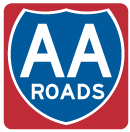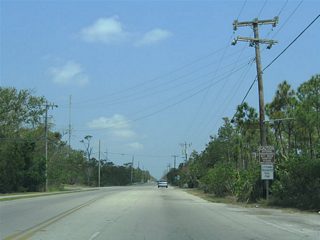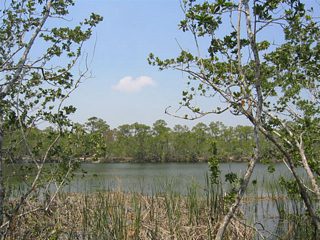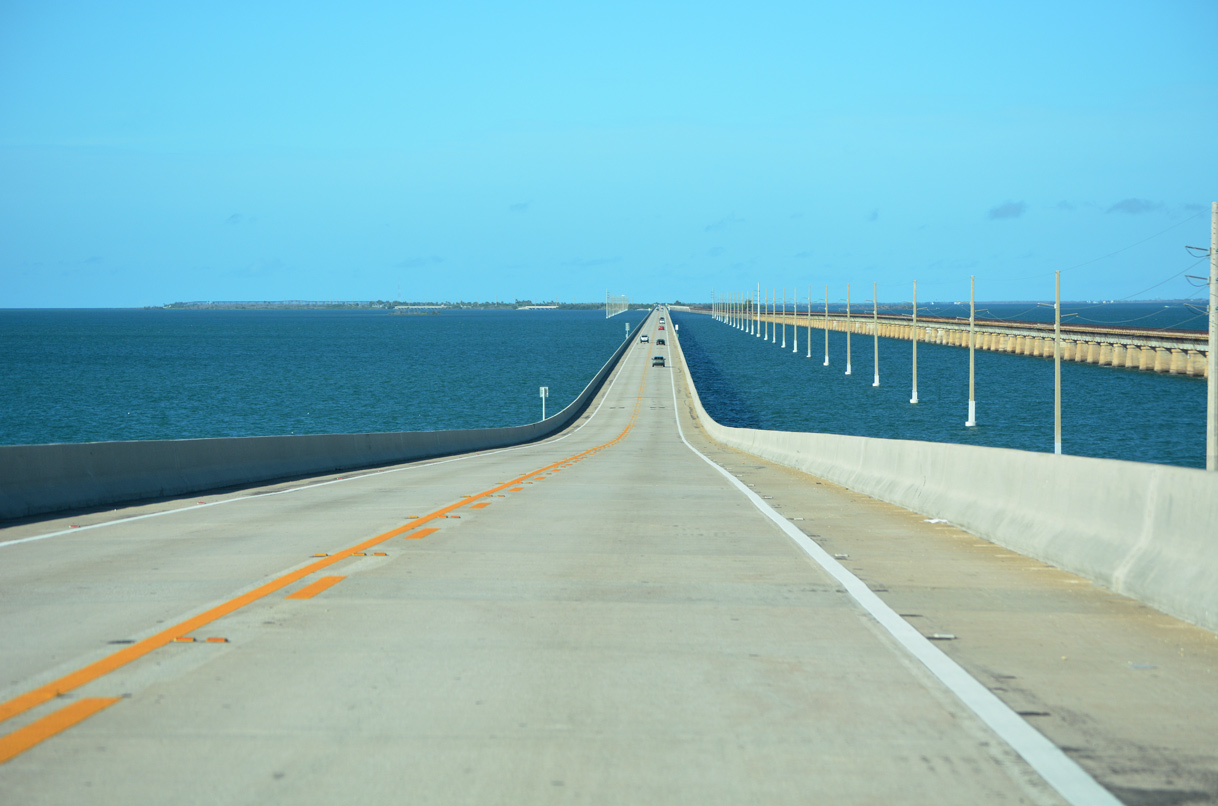
Florida Keys
Overview
The Florida Keys represent a chain of islands extending southwest from the Homestead area to the Dry Tortugas in the Gulf of Mexico. The Keys, a word derived from the Spanish word cayos, meaning small islands, consist of a series of small coral islands situated on a thick layer of limestone. Surrounded by Florida Bay, the Gulf of Mexico, and the Atlantic Ocean, the islands rise to a maximum height of 18 feet on Windley Key. 800 of the islands are large enough to appear on USGS quads and other government maps, however many more consist of nothing more than a stand of mangroves just barely about sea level. A live area of coral islands lie between four and seven miles offshore of the Keys.1
The Tequesta and the Calusa native Indian tribes lived throughout the Keys and South Florida when Spanish explorers arrived in the 16th century. The arrival of Europeans brought disease to many native tribes throughout America, including the natives of the Florida Keys. One early explorer observed the chain of islands and gave them the name Los Martires, meaning the martyrs. The coral reefs that surround the islands were notorious for claiming vessels at the time, thus giving the land the nickname "martyrs". Florida and the Keys were swapped between the kingdoms of Spain and Britain between 1763 and 1783. The treaties between the two countries were vague in their declaration of the Florida Keys, as the two counties were more focused on Havana, Cuba. In 1821, all of Florida, including the Keys, were ceded to the United States.2
In 1845 Florida was granted statehood. However much of the state remained vastly undeveloped with the exception of north Florida and the port and Navy town of Key West. In the early 1900s, entrepreneur Henry Morrison Flagler took on the task of linking Key West with the Florida mainline by constructing the Florida East Coast Railway from Homestead southward. In 1912, the railroad line carried its first train, and the line would remain in operation until 1935.2
1935 included the infamous Labor Day Hurricane, a category five storm that blew across the Florida Keys. The massive storm surge destroyed much of Flagler's railroad line, rendering access between Key West and Homestead inaccessible. The rise of the automobile as the most viable way to travel resulted in the construction of the original Overseas Highway in 1938. Constructed with more than 40 bridges, the original road, dubbed U.S. 1, traveled 126 miles from Key West to the Homestead over the same path of the original railroad line.2
The Keys include a variety of communities ranging from Islamorada, the "Sportfishing Capital of the World", Key Largo, the "Diving Capital of the World", Marathon, an original base camp for Henry Flagler's railroad, Big Pine Key, home of the endangered species Key Deer, and Key West, an eclectic city which is the southernmost in the United States.
Key West3
Key West was founded in 1822 and incorporated May 1889. In 1890 the city held the title as Florida's largest city with 18,080 residents. The city played a role in rising tensions between the U.S. and Spain (Cuba) and became the home to Navy operations at the close of the 19th century. The cigar industry otherwise was a main staple of the Key West economy through the early 1900s. During the same time period the establishment of the Key West Electric Street Railway Company resulted in construction of a transit line along Duval Street, and construction of a road joined downtown with east ends of the island. That road is known as Flagler Avenue today.
Entrepreneur Henry Flagler arrived to Key West in the early 1900s and embarked on building a railroad line between the city and Miami in 1905. Dubbed the Florida East Coast Railroad, Flagler's crews constructed the railroad in just three years with the line opening on January 22, 1912. To accommodate the railroad and its terminal in Key West, 134 acres of land was created with fill from the area now known as Trumbo. World War I brought a renewed presence from the military to Key West. With land leased from the Florida East Coast Railroad, Naval Air Base Key West was commissioned on December 18, 1917.
Tourist activity fueled Key West's growth in the 1920s, and at that time the beginnings of a road network linking the coastal city with the Florida mainland arose. The first Overseas Highway opened in 1928 and consisted of separate roadways connected by 40 miles worth of ferry boat lines. In the 1930s tough times braced the nation with the Great Depression, and Key West was no exception. The tourist industry all but ceased, military operations were reduced to maintenance facilities, and the cigar industry dissolved due to the rise of cigarettes. Things got so bad economically that Key West deincorporated in 1934 with a reduced population of 13,118. The Labor Day Hurricane of 1935 followed, severing Key West from ground transportation.
In 1936, the state purchased the Florida East Coast Railroad right-of-way and began constructing the Overseas Highway. The existing infrastructure was converted for use by automobiles by adding 20 foot road beds or decks respectively. Signed as U.S. 1, the roadway opened to traffic in 1938. The onset of World War II brought Key West and the military back together with the opening of the Trumbo Point Navy station as a training and operations facility. 3,000 acres of land were now dedicated to military operations and in March 1945, Navy Station Key West was established. The increased military presence put an increased demand on U.S. 1, so 17 miles of the original alignment were bypassed by a straighter roadway. These today are signed as SR 4A and various Monroe County highways (signed and unsigned).
The economy of Key West shifted to the shrimping industry during the 1950s, the sunset celebration at Mallory Square began in 1953, and during the Cuban missile crisis of 1962, aircraft reconnaissance flights originated at Naval Air Station Key West. Tourism continued a slow growth in the Keys and Key West through the 1970s and 80s. In 1982 the U.S. Border Patrol began checkpoints at Florida City, requiring all travelers to present proof of citizenship. Traffic delays were long and many tourists stopped coming to Key West all together because of the aggravation involved with the road blocks. To counteract the actions, Key West took the symbolic step of declaring independence in the form of the Conch Republic. Flags featuring a conch shell went up briefly and the Key West mayor even applied for foreign aid from the federal government. The efforts resulted in the removal of the Border Patrol check point, but Conch Republic flags still fly symbolically throughout the Keys.
Key West serves as the county seat of Monroe in addition to being a cruise ship port, naval training flight area, and a cultural destination. 26,890 residents call the city home as of the 2020 U.S. Census.
Routes
 U.S. 1 - Overseas Highway
U.S. 1 - Overseas Highway
U.S. 1 follows the Overseas Highway south from Homestead to its terminus at Key West. The US route varies between two and four lanes on its 126-mile drive along the chain of islands. The roadway to Key West was originally numbered Florida State Road 4A, and some segments of the original road remaining in place and are signed simply as SR 4A and SR 4B with no shields in place. Other older segments of U.S. 1 remain in use as sparsely signed Monroe County highways.
 State Road A1A - South Roosevelt Boulevard
State Road A1A - South Roosevelt Boulevard
SR A1A represents an alternate routing of U.S. 1 throughout the state of Florida. There are many segments of the state road, and the southernmost leg is in Key West. Although only signed at the eastern end, SR A1A follows South Roosevelt Boulevard along the Cow Key Channel and Gulf of Mexico waters from U.S. 1 (Overseas Highway) south and west to Key West International Airport and Bertha Street. The state road ends at Bertha Street.
 Card Sound Road
Card Sound Road
Card Sound Road provides a second crossing between the Florida Keys and the Florida Mainland. Branching southeast from U.S. 1 at Florida City, Card Sound Road is undesignated south in Miami-Dade County to the county line. Once in Monroe County, the highway becomes part of CR 905A and spans the tolled Card Sound Bridge. At the junction with CR 905, CR 905A ends.
 Card Sound Road
Card Sound Road
County Road 905 lines the southern leg of Card Sound Road southwest from CR 905A back to U.S. 1 at Key Largo. CR 905 also spurs northeast of Card Sound Road to the private Ocean Reef Club at the north end of Key Largo.
Monroe County Road C5A - Flagler Avenue
U.S. 1 doubles as unsigned State Road 5 throughout the Sunshine State. Many times when a parent route carries a one or two digit state road number, the alternate, loop, business, or bypass carries the same number coupled with a lettered suffix. CR C5A represents old SR 5A, an alternate route for U.S. 1 through Key West. Relegated to county road status, and for the most part unsigned, CR C5A follows Flagler Avenue west from SR A1A (S Roosevelt Boulevard) to White Street through the mid section of Key West.
Per the 2014 FDOT GIS county road shape file, CR C5A exists only between White Street and a point just west of 17th Avenue along Flagler Avenue.
City Streets and Roads
White Street Pier
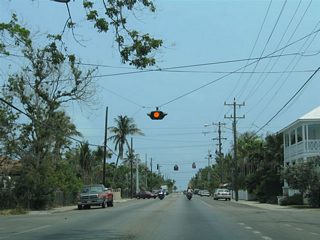
Looking at White Street southbound at Von Phister Street in southwest Key West. White Street heads south from Eaton Street at Palm Avenue to Higgs Beach Park and the White Street Pier. 05/07/06

White Street south at Flagler Avenue (Monroe County C5A). Flagler Avenue comprises an east-west through route between White Street and South Roosevelt Boulevard (SR A1A) at Cow Key Channel. 05/07/06
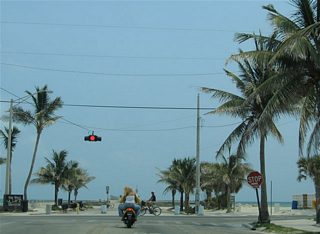
White Street ends at Atlantic Boulevard between Higgs and Rest Beach. The Key West AIDS Memorial lies on the south side of the intersection. Beyond that is the White Street Pier. Atlantic Boulevard west heads through Higgs Beach Park to Reynolds Street. Atlantic Boulevard east continues a short distance to Bertha Street (SR A1A). 05/07/06
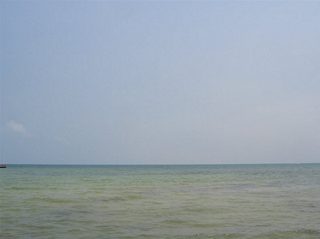
Looking outward at the Straits of Florida from the White Street Pier and Higgs Beach. A scant 90 miles separate Key West, Florida from the nation of Cuba. To the west is the Southernmost Point Monument and the Harry S. Truman Annex. Damaged pier remnants pictured here remained as a testament to the numerous hurricanes that skirted the area in the early 2000s. The White Street pier was closed at the time of these photos. 05/07/06
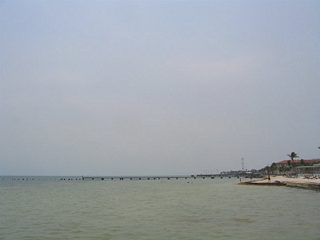
Looking outward at the Straits of Florida from the White Street Pier and Higgs Beach. A scant 90 miles separate Key West, Florida from the nation of Cuba. To the west is the Southernmost Point Monument and the Harry S. Truman Annex. Damaged pier remnants pictured here remained as a testament to the numerous hurricanes that skirted the area in the early 2000s. The White Street pier was closed at the time of these photos. 05/07/06
